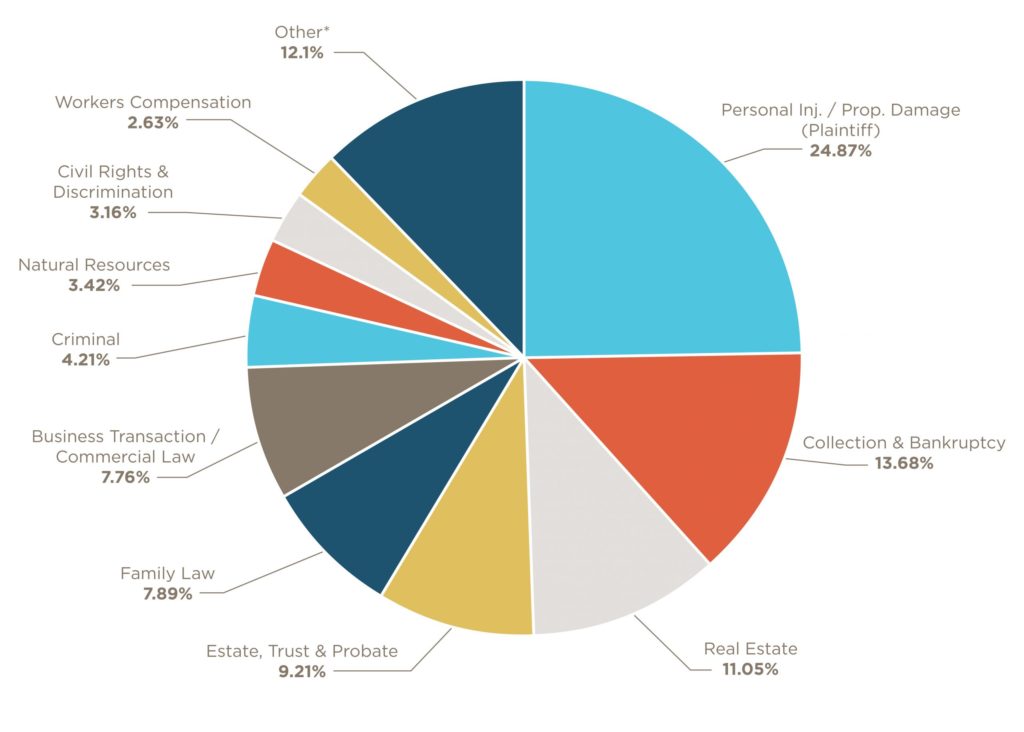4 Most Common Legal Malpractice Errors

Lawyers make unintentional errors every day – in hard and easy cases, in trials and transactions, in large and small firms, and across many areas of practice. Deadlines, long hours, demands from clients and more contribute to this, and even the most meticulous lawyer is bound to make a mistake at least once in his or her legal career. These law firm errors are not all equal, and can span across different parts of the business, from operational errors to technical errors. The four groups of errors include: administrative, substantive, client relations and intentional wrongs. This blog will explore the different error types and their frequency, based on OAMIC claims data.
ADMINISTRATIVE ERRORS – 32% of Claims
You might be surprised to learn that most of the claims reported are as a result of calendaring and time management. Failure to react to a calendar item, which involves entering a deadline into a system but failing to respond to the tickler reminder, is the top administrative error. The second administrative error is procrastination in performance of service or lack of follow up, followed by failure to calendar properly. These top administrative areas show that it is not enough to have a calendaring system, the attorney must employ the proper use of tickler systems and manage their time wisely.
Luckily, administrative errors are easy to prevent. Investment in, and proper use of, a calendaring system far outweighs the cost of a malpractice lawsuit.
SUBSTANTIVE ERRORS – 30% of Claims
Substantive errors are the most common in the insurance industry. Using OAMIC claims data, they only differ by 2% when compared to administrative errors. The most noticeable errors in this category are failure to know or ascertain deadlines correctly and inadequate discovery of facts or investigation. Because lawyers face rigid deadlines, failure to know or ascertain dates like court dates, limitation periods, etc. can be the perfect grounds for a legal malpractice suit.
In today’s high tech world, there is a desire for everything to be done quickly. However, legal advice is not one size fits all. A lawyer must be willing to delve deeper into the underlying facts of a case to avoid the error of inadequate discovery or investigation. Failure to do due diligence in a title search, in the discovery of a prior will, liens or out-standing loans, etc. can result in a malpractice lawsuit.
Some substantive errors are more prevalent in certain areas of practice. For example, for Business Transaction and Commercial Law, conflict of interest is the top alleged error. Attorneys in this area of law tend to fall into the trap of representing multiple parties. Conflicts can occur between current and previous clients represented by the attorney, or when the attorney has a personal interest in the matter. To avoid conflicts of interest, an attorney must be ready to withdraw from cases with conflicts, inform clients of potential conflicts, as well as provide conflict waivers, if possible.
INTENTIONAL WRONGS – 14% of Claims
Intentional wrongs are responsible for 14% of our claims, yet their consequences can be long-lasting and detrimental to future business. Even worse, they can lead to disbarment. Intentional wrongs include: malicious prosecution or abuse of process, fraud, violation of civil rights, libel and slander. The most common are malicious prosecution, abuse of process and fraud. These types of errors can ruin a firm’s finances and reputation. To mitigate such claims, firms must implement internal controls and record all disbursements from the trust account.
CLIENT RELATIONS – 9% of Claims
The top three client relation errors include: failure to obtain client’s consent or to inform client, failure to follow client’s instruction and improper withdrawal from representation. These account for 5% of total claims, based on OAMIC’s claim data. Although these errors are not as frequent as the aforementioned errors, they can result in large losses for the firm, especially if the underlying case is large.
Attorneys must ensure that there is effective communication with clients. An example of failure to follow a client’s instructions includes accepting or failing to fully explain all settlement offers. If a client’s instruction and an attorney’s recommendation are different, it is always best to document this in writing to avoid a potential malpractice claim. Client relation errors mostly involve a lack of communication. An attorney must ensure that clients are well informed about the case itself, as well as possible consequences or outcomes.
PREVENTION IS EVERYTHING
Mistakes are common in the legal practice. The key to mitigating such mistakes is setting up effective risk management techniques, such as cloud-based legal practice management software, internal controls (especially as it relates to trust funds), participating in continuing education programs and ensuring effective communication with clients.
POST-CLAIM NEXT STEPS
Unfortunately, most legal professionals will find themselves responding to an allegation of malpractice at some point in their careers. These claims, with and without merit, require investigation and defense. We know merely thinking about a legal malpractice claim, much less being on the receiving end of one can be an unnerving experience. We’ve made the process of claims reporting as easy as possible. OAMIC’s local claims staff works with our insureds and, if necessary, local counsel to resolve the issue side-by-side. You can learn more about the process on our Claims Page.
Note: The other 15% of OAMIC’s claims come from other or unknown error types.



